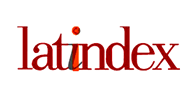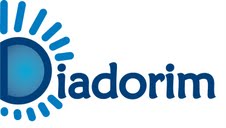SATURAÇÃO EM HEMOGLOBINA PELO OXIGÊNIO ATRAVÉS DA OXIMETRIA DE PULSO: COMPARAÇÃO ENTRE PRONG NASAL E CÂNULA NASAL LOCADA EM NASOFARINGE E FOSSA NASAL
DOI:
https://doi.org/10.13037/rbcs.vol1n1.489Keywords:
prong nasal, cânula nasal, oximetria de pulso.Abstract
Este estudo tem como objetivo verificar se existe diferença na saturação em hemoglobina pelo oxigênio através da oximetria de pulso, quando comparados os cateteres de oxigênio prong nasal (tipo óculos) e a cânula nasal locada em nasofaringe e fossa nasal a 4 cm da narina. Observamos que a média da saturação foi igual quando comparados os tipos de cateteres e suas localizações, prong nasal com 94,1%, cânula nasal locada em nasofaringe com 94,2% e cânula nasal locada a 4cm da fossa nasal com 93,9%.Downloads
References
1. POTTER, P. A.; PERRY, A. G. Fundamentos de Enfermagem: conceitos, processo e prática. 4. ed. Rio de Janeiro:
Guanabara Koogan, 1999.
2. GONÇALVES, J. de L. Terapia Intensiva Respiratória - Ventilação Artificial. Curitiba-PR, Lovise, 1992.
3. WYNGAARDEN, J. B.; SMITH, L. Jr.; BENNETT, C. J. CecilTratado de Medicina Interna. v.1, 19. ed. Rio de Janeiro: Guanabara Koogan, 1993. L216 p. 4. PRADO, F. C. do; RAMOS, J. de A.; VALLE, J. R. do. Atualização terapêutica. São Paulo; Artes médicas 2001.
5. BETHLEN, N. Pneumologia. 4. ed. São Paulo: Atheneu, 1995. 957 p.
6. BRUNNER; SUDDARTH. Tratado de enfermagem médico cirúrgica. Rio de Janeiro: Guanabara Koogan, 1998.
7. CELLI, B., R. et al. Standards for the diagnosis and care of patients with chronic obstructive pulmonary disease. Am J Resp Crit Care Med V. 152, p. 577-1120, March. 1995.
8. KNOBEL, E. Condutas no paciente grave. São Paulo: Atheneu, 1994. 919 p.
9. LUCKMANN; SORENSEN. Enfermagem médico - cirúrgica: uma abordagem psicofisiológica. 4. ed. Rio de Janeiro: Guanabara Koogan, 1996 .1050 p.
10. REYNOSO, F. N. et al. Oxinmetria de Pulso Y Broncoscopia. Ver. Inst. Nal. Enf. Resp. Méx., v.7, n.3, Jul./Set. 1994.
11. SCHNAPP, L. M.; COHEN, N. H. Pulse oximetry uses and abuses. Chest, v.98, n.5, p. 1244-1249, Nov. 1990.
12. CINTRA, E. A. et.al. Assistência de enfermagem ao paciente gravemente enfermo. São Paulo: Atheneu, 2001.
13. CARMAGNANI, M. I. S. et al. Manual de procedimentos básicos de enfermagem. Rio de Janeiro: Interlivros. 1995. 287 p.
14. ARAÚJO, M. J. B. Técnicas fundamentais de enfermagem. Rio de Janeiro: Bezerra de Araújo, 1980. 431 p.
15. ALEXANDRE, N. M. C.; BRITO, E. Procedimentos básicos de enfermagem. São Paulo: Atheneu, 1995. 122p.
16. BOSHS, R. M. et al. Técnicas básicas de enfermagem.
13. ed. Curitiba: Florence, 1995. 149 p.
17. KAWAMOTO, E. M.; FORTES, J. I. Fundamentos de enfermagem. São Paulo: EPU, 1986. 137 p.
18. MUSSI, N. M. et al. Técnicas fundamentais de enfermagem. São Paulo: Atheneu, 1995. 161 p.
19. SOUZA, E. de F. Novo manual de enfermagem: procedimentos e cuidados básicos. 4. ed. Rio de Janeiro: Cultura Médica, 1988. 491 p.
Downloads
Published
Issue
Section
License
Copyright (c) 2025 Emiko Kawata Medeiros, Gilmara de Farias Souza

This work is licensed under a Creative Commons Attribution-NonCommercial-NoDerivatives 4.0 International License.
Policy Proposal for Journals offering Free Delayed Access
Authors who publish in this magazine agree to the following terms:
- Authors maintain the copyright and grant the journal the right to the first publication, with the work simultaneously licensed under a Creative Commons Attribution License after publication, allowing the sharing of the work with recognition of the authorship of the work and initial publication in this journal.
- Authors are authorized to assume additional contracts separately, for non-exclusive distribution of the version of the work published in this magazine (eg, publishing in institutional repository or as a book chapter), with the acknowledgment of the authorship and initial publication in this journal.
- Authors are allowed and encouraged to publish and distribute their work online (eg in institutional repositories or on their personal page) at any point before or during the editorial process, as this can generate productive changes, as well as increase impact and citation of the published work (See The Effect of Open Access).








